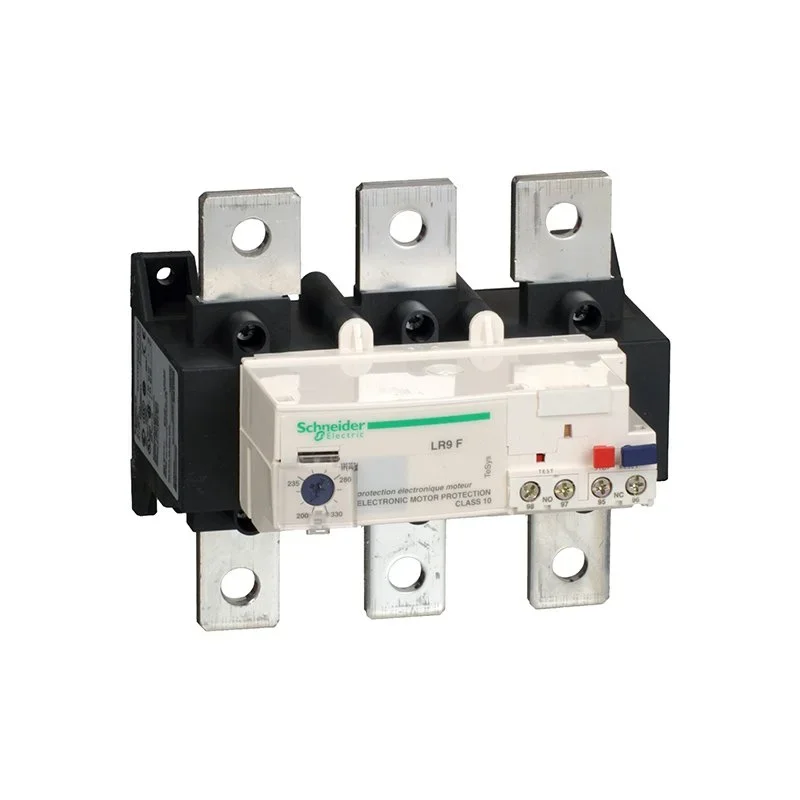Electronic thermal overload relays are essential components in electrical systems to protect motors and other electrical equipment from overheating. They work by monitoring the temperature of the equipment and interrupting the power supply if it exceeds a certain threshold. In this article, we will delve into the working principle of electronic thermal overload relays, their components, applications, advantages, and installation and maintenance procedures.
Understanding Thermal Overload Protection
Thermal overload protection is crucial in electrical systems as it prevents damage to motors and other equipment due to excessive heat. When a motor operates for an extended period or under heavy load, it generates heat. If this heat is not dissipated properly, it can lead to insulation breakdown, motor failure, or even fire hazards. Thermal overload protection mechanisms, such as electronic thermal overload relays, monitor the temperature of the equipment and act as a safety measure to prevent overheating.
Components of Electronic Thermal Overload Relays
Electronic thermal overload relays consist of several key components that work together to provide effective thermal protection. These components include:
Temperature Sensor: The temperature sensor is responsible for measuring the temperature of the equipment. It can be a thermistor, a bimetallic strip, or a resistance temperature detector (RTD). The sensor is in direct contact with the equipment and detects any increase in temperature.
Control Circuit: The control circuit receives the temperature readings from the sensor and processes them. It compares the measured temperature with the pre-set threshold value and determines whether the equipment is operating within safe limits or if it is overheating.
Tripping Mechanism: The tripping mechanism is activated when the control circuit detects that the temperature has exceeded the pre-set threshold. It interrupts the power supply to the equipment, preventing further operation until the temperature returns to a safe level.

Working Principle of Electronic Thermal Overload Relays
The working principle of electronic thermal overload relays can be summarized in the following steps:
Temperature Sensing: The temperature sensor continuously monitors the temperature of the equipment. It measures the temperature and sends the readings to the control circuit.
Threshold Comparison: The control circuit compares the measured temperature with the pre-set threshold value. If the temperature exceeds the threshold, it indicates that the equipment is overheating.
Tripping Action: Once the control circuit detects that the temperature has exceeded the threshold, it activates the tripping mechanism. The tripping mechanism interrupts the power supply to the equipment, preventing further operation.
Cooling Period: After the tripping action, the equipment enters a cooling period. During this time, the temperature decreases, and the control circuit continuously monitors the temperature to ensure it returns to a safe level.
Resetting: Once the temperature returns to a safe level, the control circuit resets the tripping mechanism, allowing the equipment to resume operation.
Applications of Electronic Thermal Overload Relays
Electronic thermal overload relays find applications in various industries and electrical systems where motor protection is essential. Some common applications include:
Industrial Machinery: Electronic thermal overload relays are widely used in industrial machinery such as pumps, compressors, conveyors, and fans. They protect the motors of these machines from overheating, ensuring their longevity and preventing downtime.
HVAC Systems: Heating, ventilation, and air conditioning (HVAC) systems often incorporate electronic thermal overload relays to protect the motors of air handlers, chillers, and cooling towers. This ensures efficient and safe operation of the HVAC system.
Power Distribution: Electronic thermal overload relays are also used in power distribution systems to protect transformers, generators, and other electrical equipment. They prevent overheating and potential damage to these critical components.

Advantages of Electronic Thermal Overload Relays
Electronic thermal overload relays offer several advantages over traditional thermal overload relays. These advantages include:
Accuracy: Electronic thermal overload relays provide precise temperature monitoring and control. They can detect even small temperature changes and respond quickly to prevent overheating.
Adjustable Threshold: The pre-set threshold value of electronic thermal overload relays can be adjusted according to the specific requirements of the equipment. This flexibility allows for customization and optimization of thermal protection.
Remote Monitoring: Some electronic thermal overload relays offer remote monitoring capabilities. This allows operators to monitor the temperature and status of the protected equipment from a central control room, enhancing safety and convenience.
Self-Diagnostics: Many electronic thermal overload relays feature self-diagnostics capabilities. They can detect faults or malfunctions in the system and provide alerts or alarms, enabling proactive maintenance and troubleshooting.
Installation and Maintenance of Electronic Thermal Overload Relays
Proper installation and regular maintenance are essential for the effective operation of electronic thermal overload relays. Here are some key considerations:
Installation: Electronic thermal overload relays should be installed according to the manufacturer's instructions and in compliance with relevant electrical codes and standards. Proper wiring and connection to the equipment are crucial for accurate temperature sensing and tripping action.
Calibration: Before commissioning, electronic thermal overload relays should be calibrated to ensure the pre-set threshold value matches the desired temperature limit. This calibration should be performed by qualified personnel using appropriate calibration equipment.
Periodic Inspection: Regular inspection of electronic thermal overload relays is necessary to ensure their proper functioning. This includes checking for any signs of damage, loose connections, or abnormal temperature readings. Any issues should be addressed promptly.
Testing: Periodic testing of electronic thermal overload relays is recommended to verify their performance. This can be done by simulating temperature increases and ensuring the relays respond correctly by tripping the power supply.

Conclusion
Electronic thermal overload relays play a vital role in protecting motors and electrical equipment from overheating. By continuously monitoring the temperature and interrupting the power supply when necessary, they prevent damage, improve safety, and enhance the lifespan of the equipment. Understanding their working principle, components, applications, advantages, and proper installation and maintenance procedures is crucial for ensuring effective thermal overload protection in electrical systems.
Understanding the Function and Benefits of Electronic Thermal Overload Relays